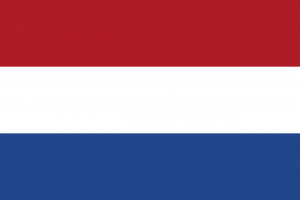Difference between revisions of "Language/Dutch/Culture/History-and-Traditions"
m (Quick edit) |
m (Quick edit) |
||
| Line 1: | Line 1: | ||
<span pgnav> | |||
{| class="wikitable pg_template_nav" | |||
|[[Language/Dutch/Culture/Geography-and-Landmarks|◀️ Geography and Landmarks — Previous Lesson]] | |||
|[[Language/Dutch/Culture/Greetings-and-Etiquette|Next Lesson — Greetings and Etiquette ▶️]] | |||
|} | |||
</span> | |||
{{Dutch-Page-Top}} | {{Dutch-Page-Top}} | ||
| Line 57: | Line 64: | ||
{{Dutch-Page-Bottom}} | {{Dutch-Page-Bottom}} | ||
<span links></span> | <span links></span> | ||
<span pgnav> | |||
{| class="wikitable pg_template_nav" | |||
|[[Language/Dutch/Culture/Geography-and-Landmarks|◀️ Geography and Landmarks — Previous Lesson]] | |||
|[[Language/Dutch/Culture/Greetings-and-Etiquette|Next Lesson — Greetings and Etiquette ▶️]] | |||
|} | |||
</span> | |||
Revision as of 17:57, 29 March 2023
| ◀️ Geography and Landmarks — Previous Lesson | Next Lesson — Greetings and Etiquette ▶️ |
As a Dutch language teacher, I always like to provide my students with some cultural information and interesting facts about the Netherlands whenever possible. In this lesson, we will be discussing the history and traditions of this beautiful country.
Finish this lesson and explore these related pages: Greetings and Etiquette & Geography and Landmarks.
History
The Netherlands has a rich and complex history dating back to the Roman Empire. The country has gone through many changes over the centuries, from being ruled by various European powers to becoming a republic in the 16th century. Some of the significant events that have shaped the Dutch history include the Eighty Years' War, the Golden Age, and World War II. Today, the Netherlands is a beautiful and prosperous nation with a unique cultural heritage that draws visitors from all over the world.
Traditions
The Netherlands has many unique traditions, some of which have been around for centuries. Here are some of the most well-known:
Sinterklaas
Sinterklaas is a traditional Dutch holiday that is celebrated on December 5th. The holiday involves Saint Nicholas (Sinterklaas in Dutch) arriving in the Netherlands on a steamboat from Spain with his helpers, Zwarte Pieten (Black Petes). Sinterklaas and Zwarte Pieten then travel the country on horseback, bringing gifts to well-behaved children and punishing naughty ones. The holiday has been a part of Dutch culture since the Middle Ages and is still very popular today.
King's Day
Formerly known as Queen's Day, this holiday is celebrated on April 27th and is a celebration of the Dutch King's birthday. The entire country turns orange, with people dressing up in the national color and taking to the streets to celebrate. Festivities include street parties, parades, and flea markets.
Carnival
Carnival is a traditional folk festival that is celebrated in the southern provinces of the Netherlands. It is a three-day celebration that takes place before the start of Lent. The festival involves people dressing up in costumes, parades, and dancing in the streets. The most famous Carnival celebration takes place in the city of Maastricht.
Dutch Cuisine
Dutch cuisine is also an essential part of the country's culture. Dutch food is generally simple and hearty, with many dishes featuring potatoes, vegetables, and meat. Some of the most popular Dutch dishes include hutspot (a mash of potatoes, carrots, and onions), Stamppot (potato and vegetable mash), and bitterballen (deep-fried meatballs). The Netherlands is also famous for its cheese, with Gouda and Edam being the most well-known varieties.
Overall, the Netherlands is a country with a rich and fascinating history and culture. Anyone interested in learning the Dutch language should also take the time to learn about these traditions and explore the beautiful landmarks and attractions of this beautiful nation.
Sources
Other Lessons
- Geography and Landmarks
- Holidays and Celebrations
- Netherlands Timeline
- Education
- Caribbean Netherlands Timeline
- Sint Maarten Timeline
- Greetings and Etiquette
| ◀️ Geography and Landmarks — Previous Lesson | Next Lesson — Greetings and Etiquette ▶️ |
